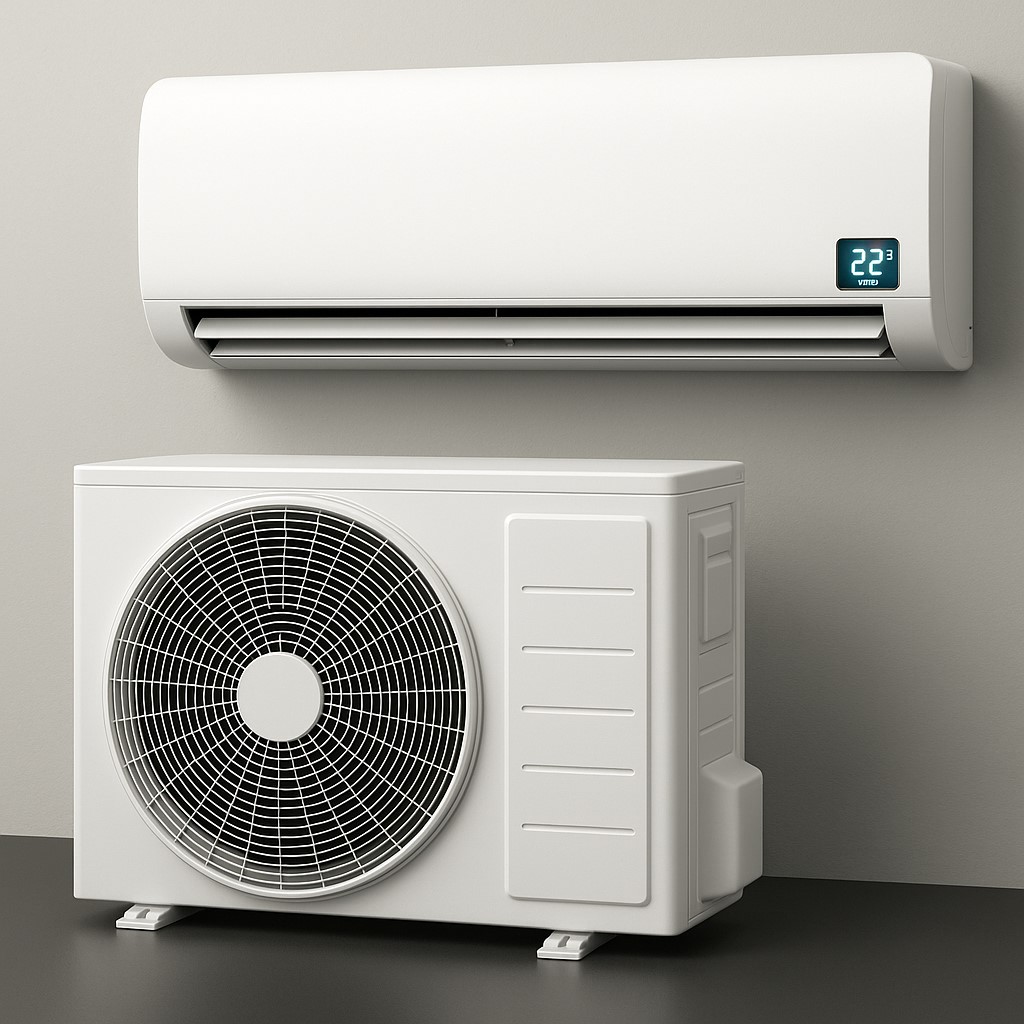Air conditioners (AC) come in various types, each designed to suit different spaces, budgets, and cooling needs. Mainly in houses two types of AC available i.e.
i. Split Air Conditioners
- Usage: Single rooms or specific areas
- Features: Comprises an indoor and outdoor unit
- Pros: Quiet, efficient, easy to install
- Cons: Higher upfront cost compared to window AC
- The compressor is outside, while the evaporator is inside.
ii. Window Air Conditioners
- Usage: Small rooms or apartments
- Features: Mounted on windows or walls
- Pros: Affordable, compact
- Cons: Noisy, blocks windows, limited coverage
- All components are in a single unit mounted on a window or wall.
An air conditioning (AC) system generally has three main components:
1. Indoor Unit Components:
This part of the AC is usually located inside the room and is responsible for cooling and distributing the air.
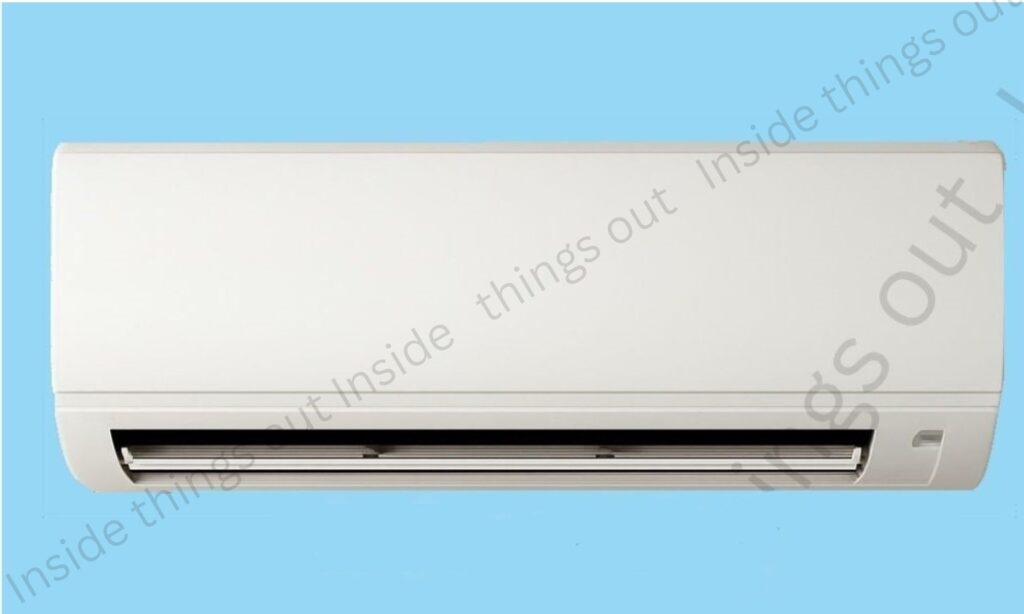

i) Evaporator Coil
- Function:
The evaporator coil is a key component in air conditioning and refrigeration systems. It absorbs heat from the air inside a building or refrigerator and allows the refrigerant inside the coil to evaporate, which cools the air. - How it works:
Refrigerant enters the evaporator coil as a cold, low-pressure liquid. As warm air from the indoor space blows over the coil, the refrigerant absorbs heat and evaporates into a gas. This process cools the air, which is then circulated back into the room. - Location:
Usually located inside the air handler or attached to the furnace in HVAC systems. - Importance:
Efficient heat absorption by the evaporator coil is critical for the cooling process and overall system performance.

ii) Blower / Fan
- Function:
The blower or fan is responsible for moving air through the HVAC system. It circulates indoor air across the evaporator coil (for cooling) or the heat exchanger (for heating) and then distributes conditioned air throughout the building via ducts. - Types:
- Blower: Usually refers to the motor-driven fan inside the air handler or furnace that pushes air through ductwork.
- Condenser fan: Located outside in the AC unit, it moves air across the condenser coil to release heat outside.
- How it works:
The blower motor spins the fan blades, drawing air from return ducts, pushing it through the system (like across the evaporator coil), and then out through the supply ducts. - Importance:
Without a properly functioning blower, air won’t circulate effectively, resulting in poor heating or cooling and uneven temperatures.
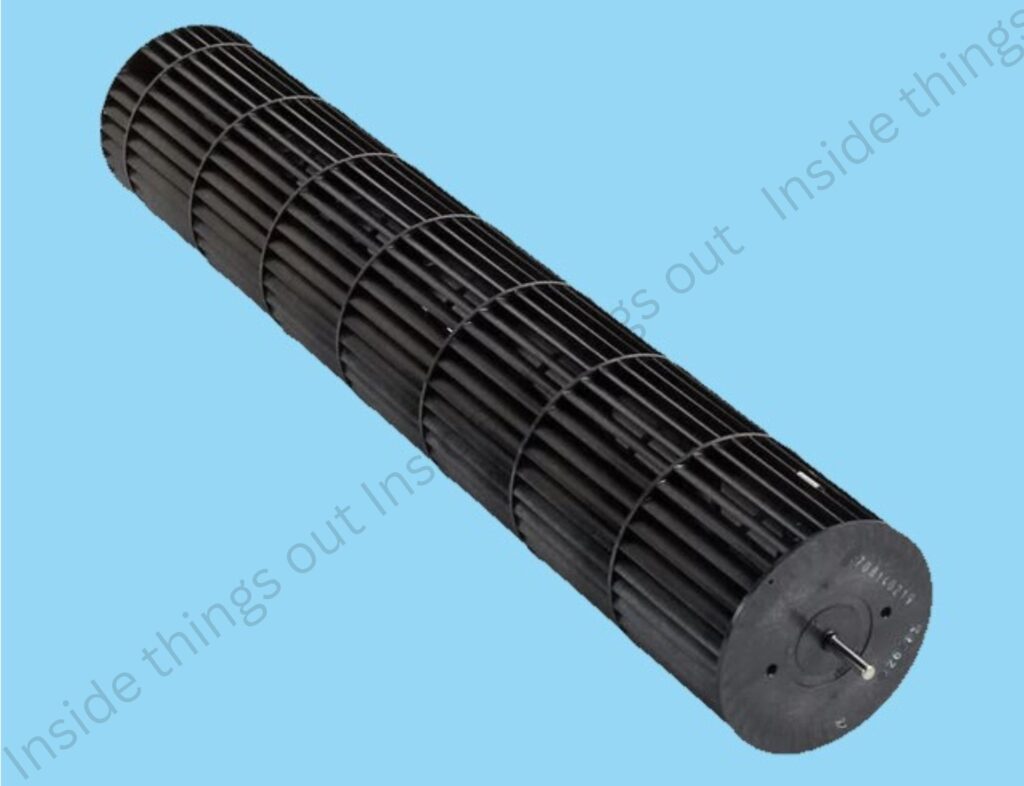
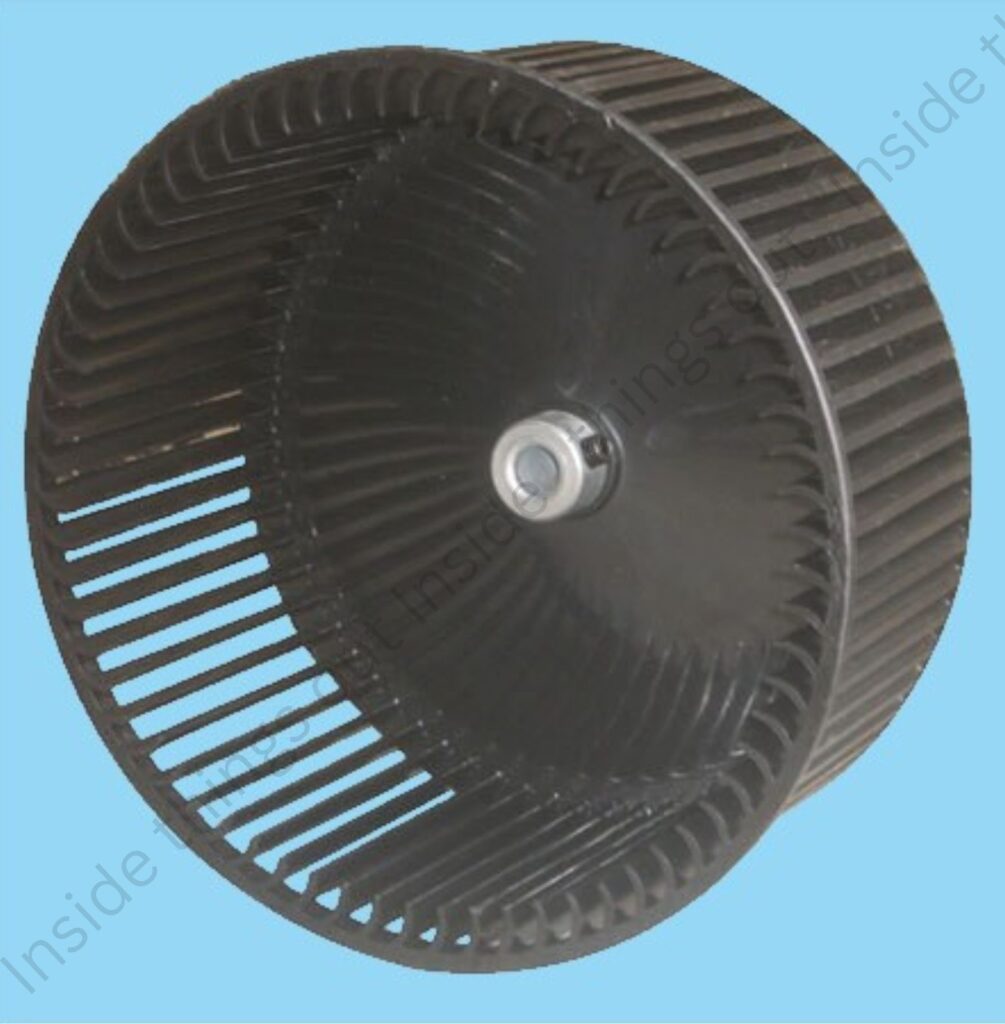
iii) Air Filter
- Function:
The air filter traps dust, pollen, dirt, and other airborne particles from the air before it enters the HVAC system. This keeps the air cleaner and protects the system’s internal components from debris buildup. - Location:
Usually installed in the return air duct or air handler unit. - Types:
- Fiberglass filters: Basic, inexpensive, traps large particles.
- Pleated filters: More efficient, traps smaller particles.
- HEPA filters: High-efficiency, traps very fine particles (used in specialized systems).
- Electrostatic filters: Use static electricity to attract particles.
- Importance:
A clean air filter improves indoor air quality, system efficiency, and prolongs the life of the HVAC equipment. - Maintenance:
Filters should be checked regularly (typically every 1-3 months) and replaced or cleaned as needed.
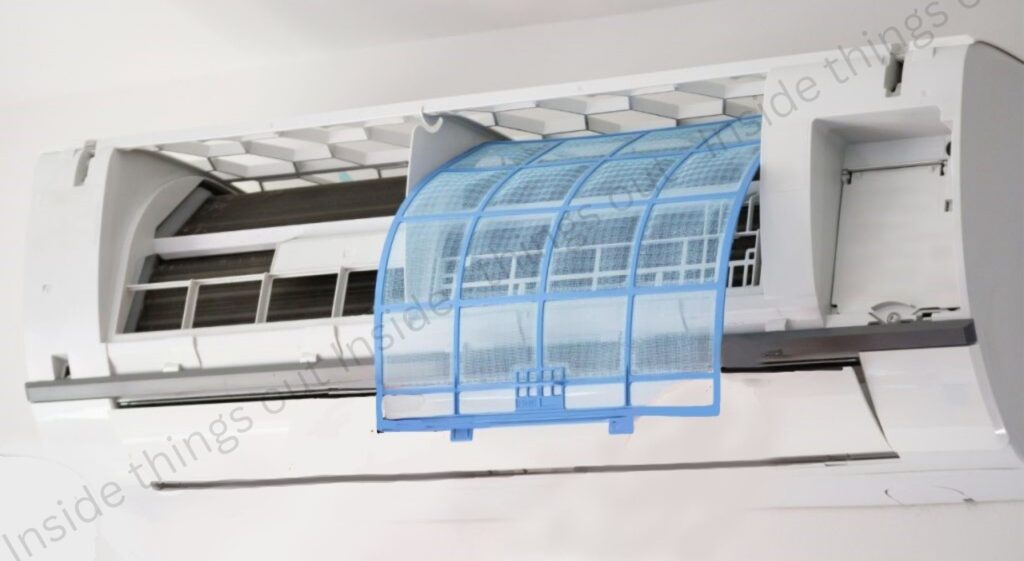
iv) Thermostat
- Function:
The thermostat is the control device that regulates the temperature inside a building by turning the heating or cooling system on or off based on the desired temperature setting. - How it works:
- The user sets a target temperature.
- The thermostat senses the current indoor temperature.
- When the temperature deviates from the set point (too hot or too cold), the thermostat signals the HVAC system to start heating or cooling until the desired temperature is reached.
- Types:
- Mechanical thermostats: Use bimetallic strips or mercury switches (older style).
- Digital thermostats: Electronic controls with digital displays.
- Programmable thermostats: Allow setting different temperatures for different times/days to save energy.
- Smart thermostats: Connected to Wi-Fi, can be controlled remotely via apps, and have learning features for efficiency.
- Importance:
The thermostat helps maintain comfort, improve energy efficiency, and reduce utility costs by controlling when the HVAC system runs.
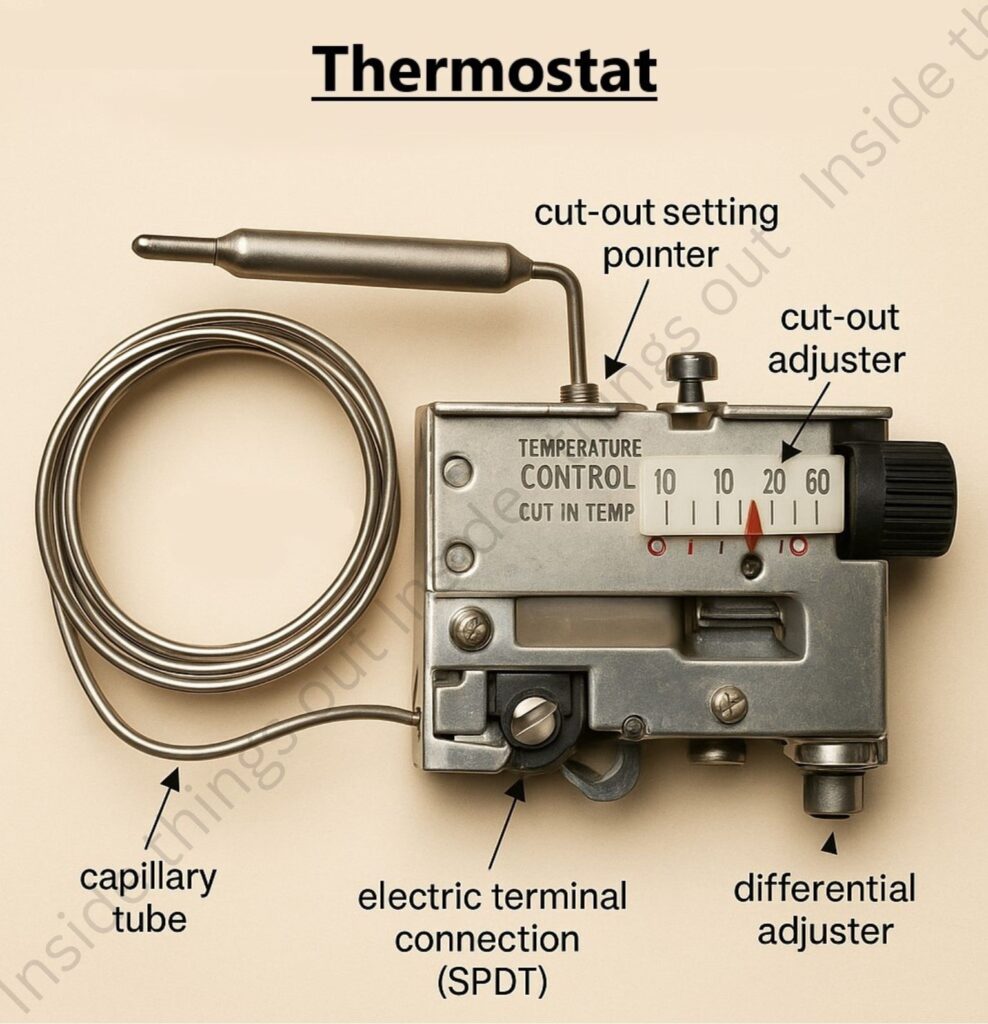
v) Drain Pan and Pipe
- Function:
The drain pan collects the condensation (water) that forms on the evaporator coil during the cooling process. The drain pipe then carries this water safely away from the HVAC unit to prevent water damage. - How it works:
When warm, humid air passes over the cold evaporator coil, moisture condenses and drips into the drain pan below the coil. From the drain pan, the water flows through the drain pipe, typically leading outside the building or to a designated drain. - Importance:
- Prevents water leakage and potential damage to ceilings, walls, and floors.
- Avoids mold growth by removing excess moisture.
- Ensures the HVAC system runs safely and efficiently.
- Maintenance:
- Drain pans should be inspected regularly for cracks or rust.
- Drain pipes should be checked and cleaned to prevent clogs from algae or debris, which can cause water to back up.
2. Outdoor Unit Components:
Located outside the building, this unit releases the absorbed heat into the environment.
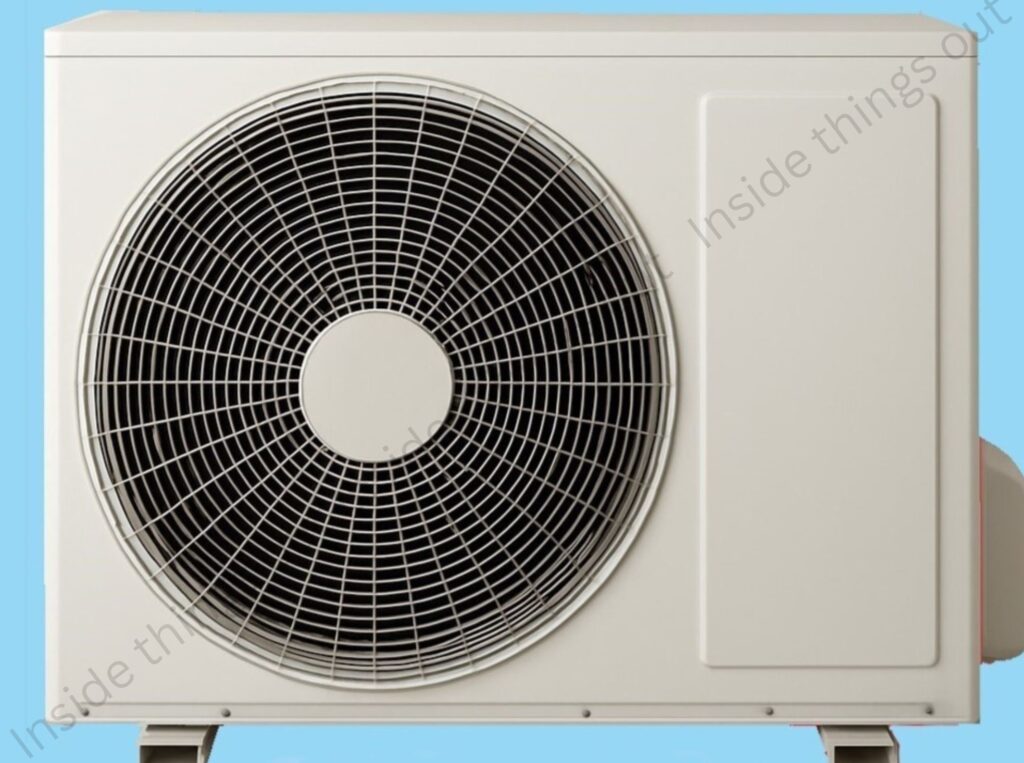
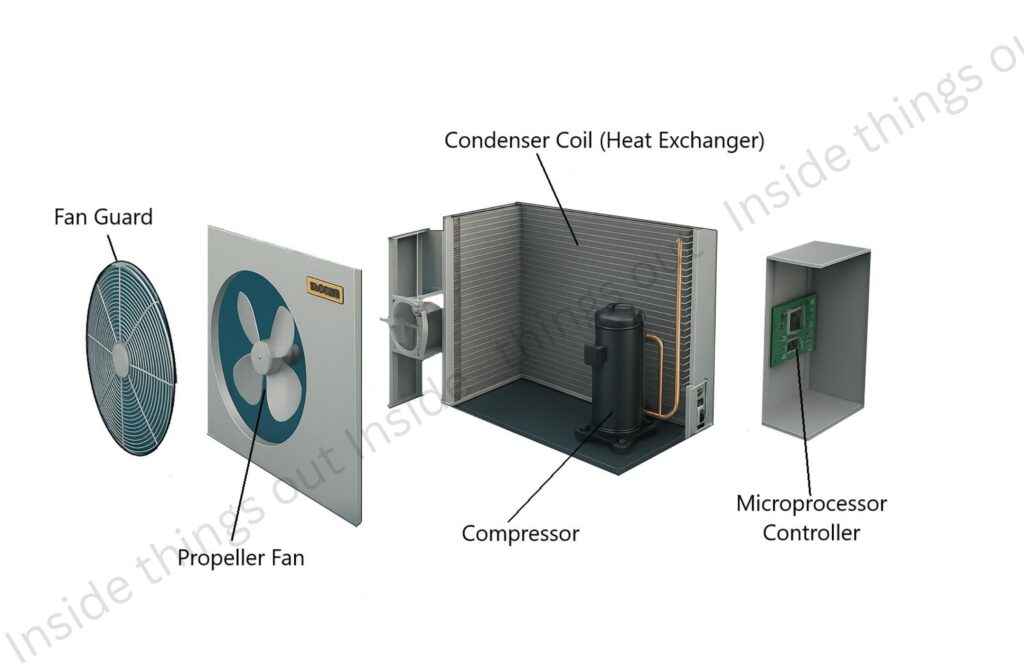
i) Compressor
- The heart of the air conditioning system, responsible for compressing low-pressure refrigerant gas into a high-pressure, high-temperature gas.
- It include piston, rotary, and scroll mechanisms, designed to efficiently compress refrigerant within different system designs and capacities.
- By refrigerant compression, the compressor raises its pressure and temperature, preparing it for the next stage in the cooling cycle — the condenser, where heat is expelled from the system.
ii) Condenser Coil
- A network of tubes and fins where the hot, high-pressure gas releases its heat to the outside air.
- The refrigerant cools and condenses back into a liquid form.
- Works in conjunction with a fan to improve heat dissipation.

iii) Expansion Valve
- Located between the condenser and evaporator.
- Reduces the pressure of the refrigerant, causing it to cool significantly.
- This cooling is essential for absorbing indoor heat effectively.

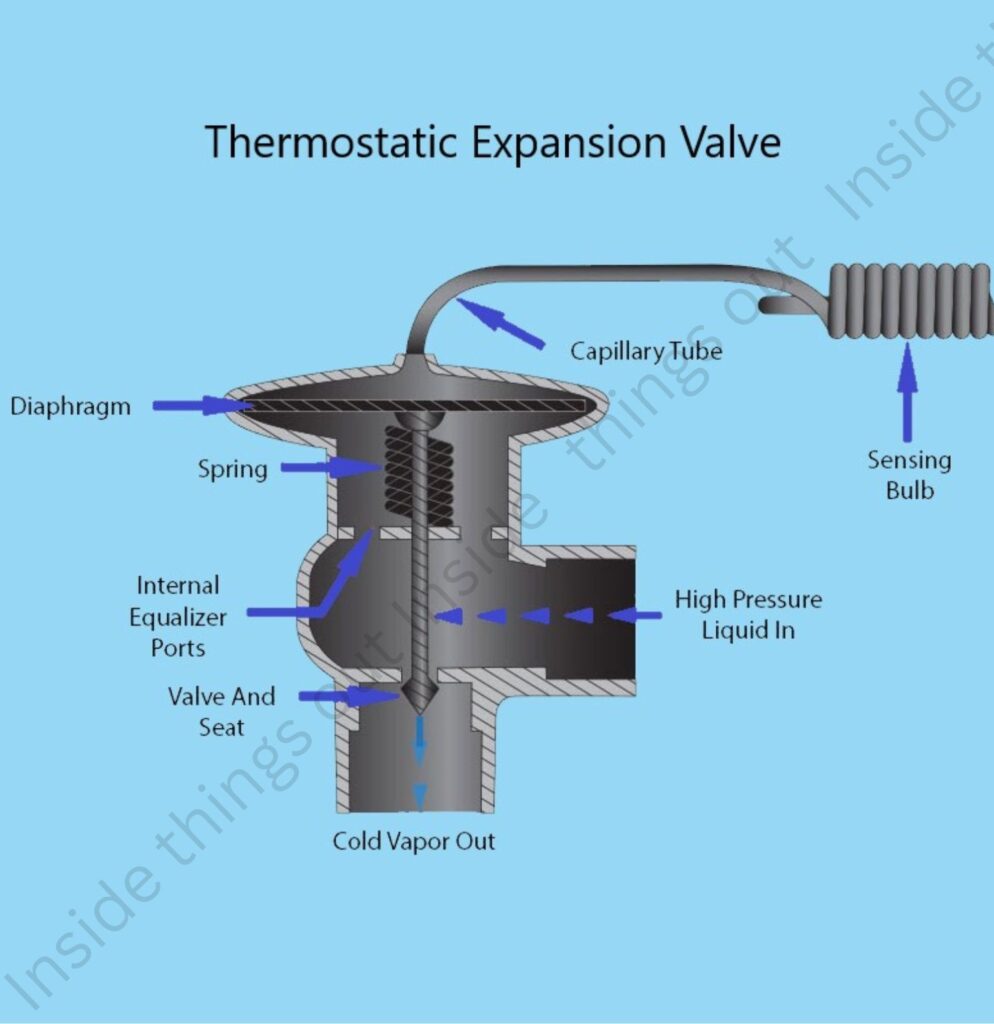
iv) Fan
• Blows outdoor air over the condenser coil to aid in the heat dissipation process.
• Usually mounted on top of the outdoor unit.
v) Refrigerant
- The fluid that circulates through the AC system, changing from liquid to gas and back to absorb and release heat.
- Common refrigerants include R-22, R-410A, and R-32, with R-410A being more environmentally friendly.
3. Connecting Components:
i) Copper Tubing
- Connects the indoor and outdoor units, allowing the refrigerant to flow between them.
- Insulated to prevent energy loss during transfer.
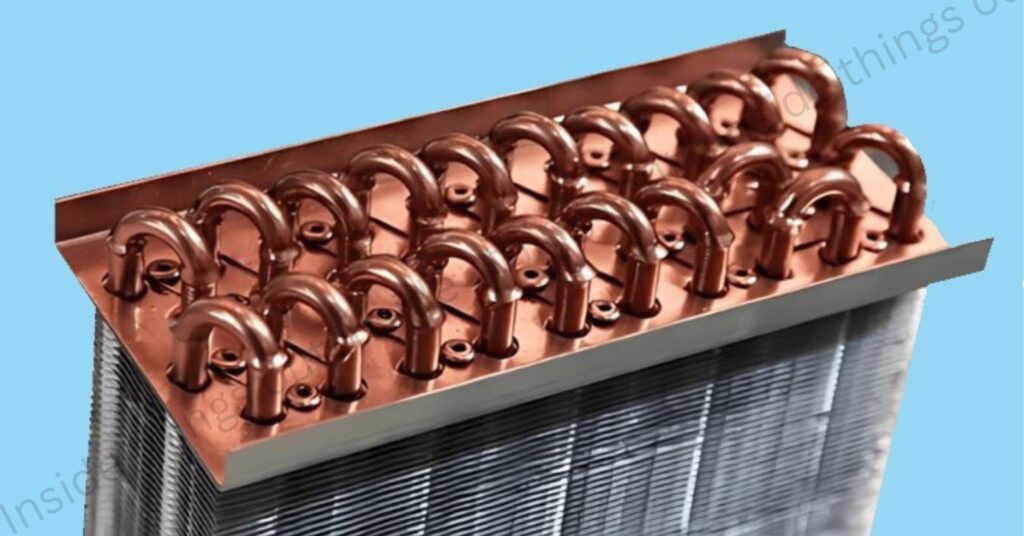
ii) Electrical Wiring
- Powers the system and connects the thermostat, compressor, and control board.
- Includes a capacitor to boost the compressor’s starting power.
iii) Insulation
- Wrapped around the refrigerant pipes to prevent condensation and energy loss.
- Reduces the risk of leaks and improves efficiency.
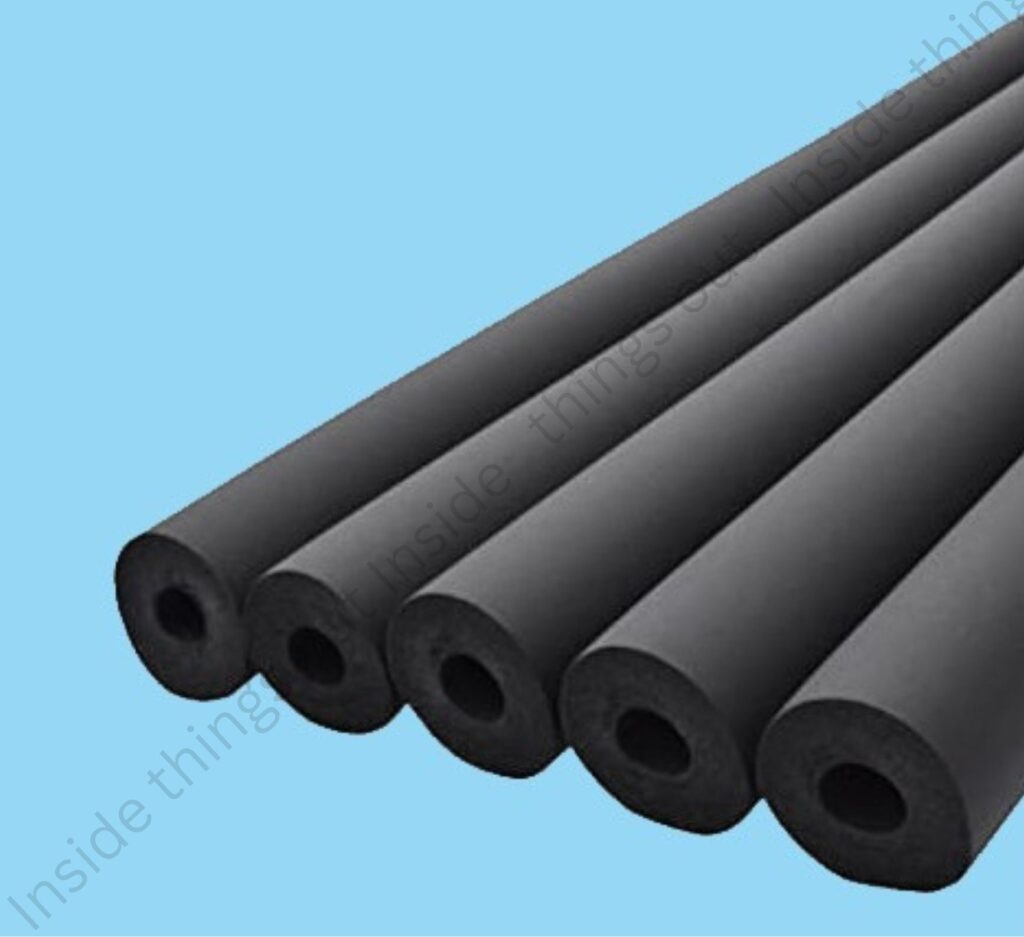
By understanding these components and their functions, we can better appreciate how air conditioners operate and make more informed choices when selecting a system for their home.
*****

